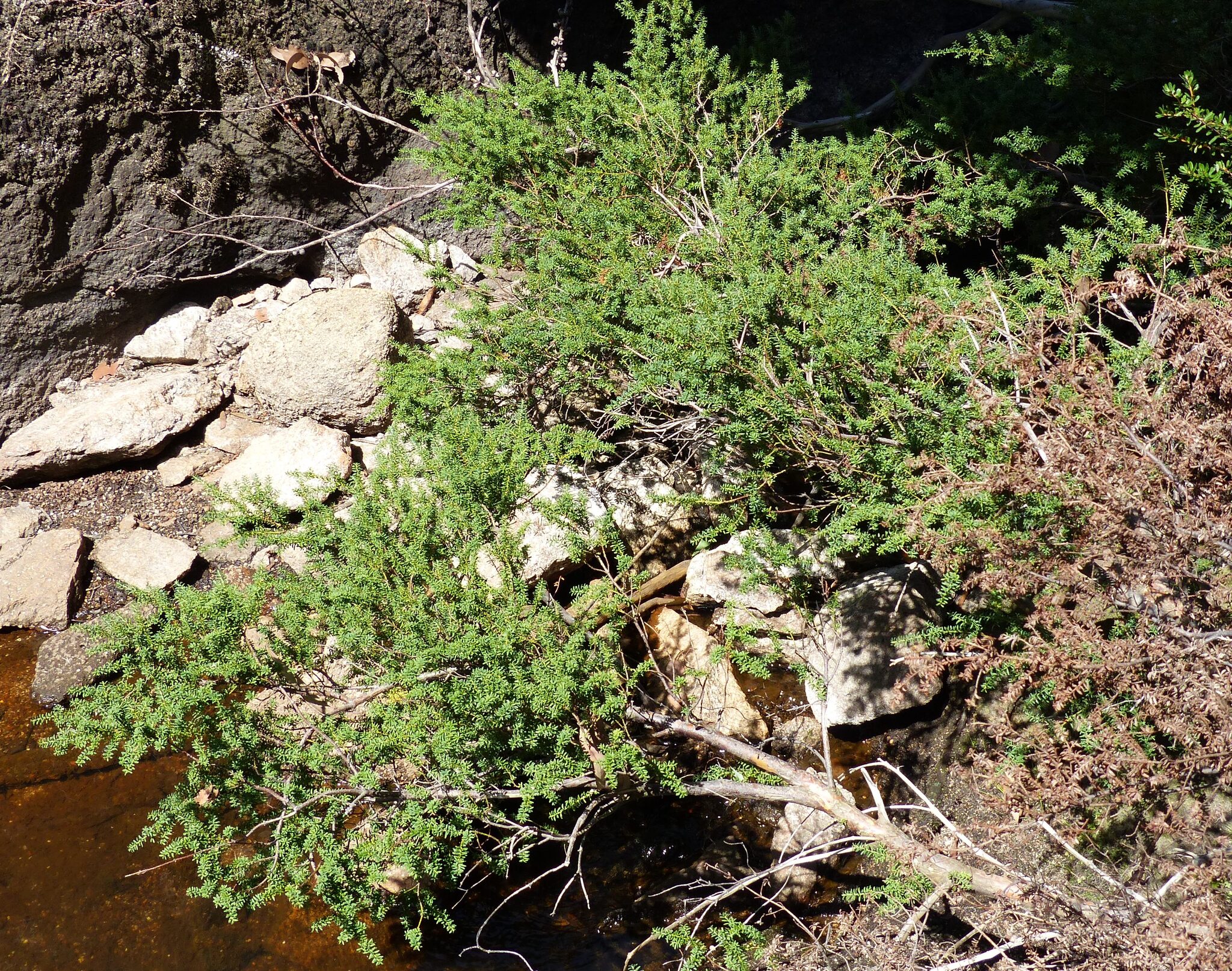
Shrub or occasionally small tree. Bark smooth, peeling in papery sheets. Leaves 0.5-1.5 cm long, 1.5-2.5 mm wide, alternate, crowded, sometimes appearing 2-ranked, oblong-linear, stiff, aromatic, blunt, midrib prominent on lower surface, stalk absent or with a minute stalk that extends down the stem as a ridge. Male cone 1-1.5 cm long, purplish. Female cone with red fleshy receptacle 3-4 mm long. Seed crested, 3-6 mm long.
Grows naturally in cool temperate rainforest in subalpine moss and alpine heath alt. c. 900 - 1500 m. It is low-growing at high altitudes but becoming a medium-sized tree in shelter. A population of large old trees grows on the Goonmirk Range in E. Gippsland, Victoria the largest of them known as the "Willis Tree" to commemorate former Victorian Government Botanist Dr J. H. Willis and possibly worthy of a separate taxonomic ranking. This species is in need of revision but current taxonomic opinion is that it does not occur naturally in New Zealand. Rarely cultivated in Australia, the potential of this species has been realised overseas with the release of female cultivars 'Alpine Lass' having extremely short leaves and 'Blue Gem' with cream young foliage generally tinged purple.
NSW, Vic., Tas.
NSW: Jervis Bay (Bot. Gds). ACT: Australian National Bot. Gds. VIC: Clayton (Monash University); Kallista (Old Williams Nsy. site); Parkville (Melbourne University Botany Department Systems garden). TAS: Hobart (Tasmanian Royal Bot. Gds).
Source: (1995). Podocarpaceae. In: . Horticultural Flora of South-eastern Australia. Volume 1, Ferns, conifers & their allies. The identification of garden and cultivated plants. University of New South Wales Press. (as Podocarpus lawrencii)
